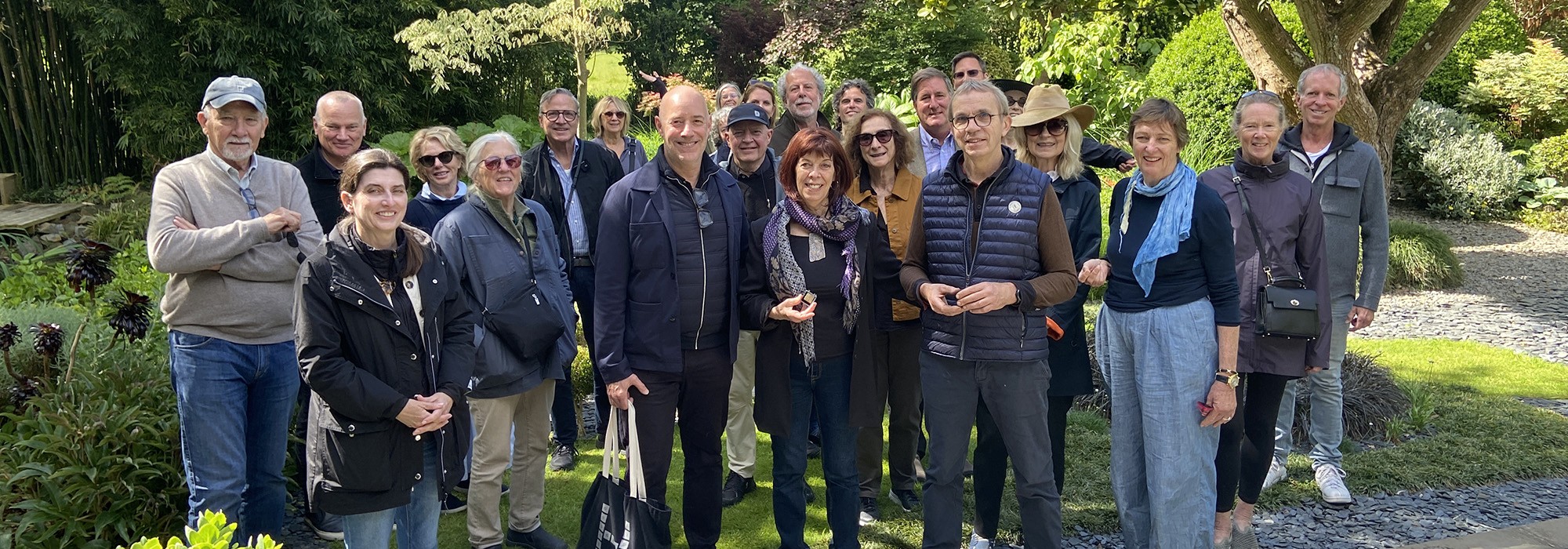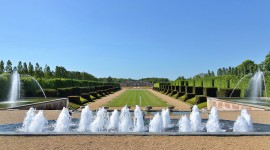Normandy's Bountiful Surprises
Normandy’s extraordinary gardens and their amazing patrons and stewards repeatedly dazzled the two dozen attendees of The Cultural Landscape Foundation’s (TCLF) 2024 international excursion. While many of the sites were steeped in centuries of tradition, often their present incarnations were realized within the past thirty years or less. That continuity of cultural and artistic legacy, whether orthodox in a landscape’s restoration or a more contemporary interpretation, was consistently and delightfully overwhelming. A complete recounting of the full itinerary would be cumbersome for the reader, so here’s a recollection of many of the highlights.
Among Normandy’s most famous gardens is Giverny, the home, garden and muse for Claude Monet for more than 40 years (1883-1926). His various interpretations of the site’s lagoon and waterlilies have captivated audiences (and commanded massive prices at auction) for generations. While it’s a very popular site that feels more institutional than personal, it is nonetheless an important cultural touchstone and served as a good introduction to the region.
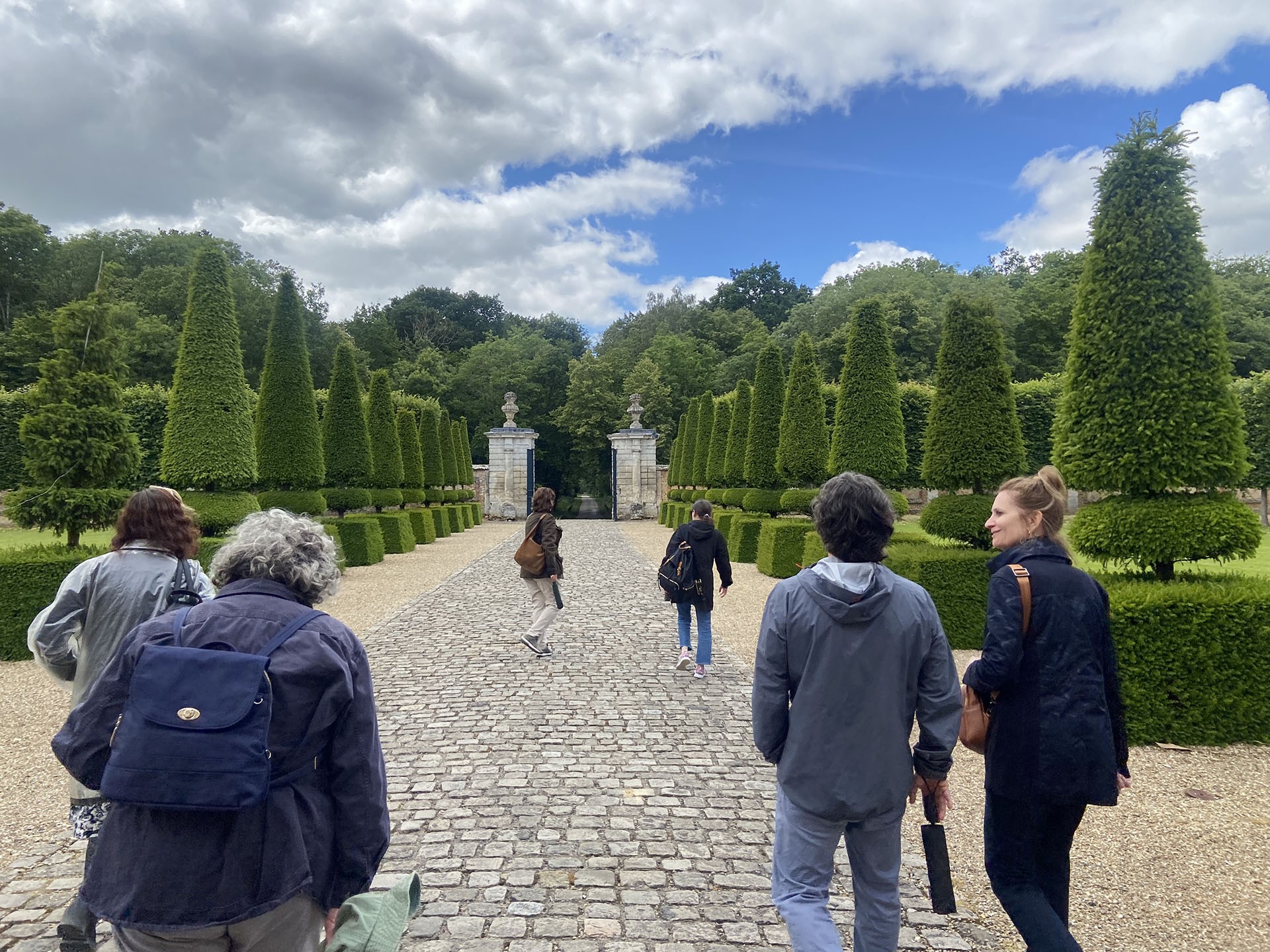
The stately and magisterial Château du Domaine du Champ-de-Bataille, purchased in 1992 by the Paris-based decorator Jacques Garcia and sited on more than 110 acres, has a series of themed garden “rooms” inspired by a drawing by André Le Nôtre (famous for designing the landscapes at Vaux-le-Vicomte and Versailles). Promenades, both vast and intimate, have been planted with thousands of trees, extensive boxwood, and complemented with some twenty ponds and fountains. The interiors of the château are equally regal.
The tour was organized by the seemingly inexhaustible Sofia Barroso (her fourth for TCLF) of the Madrid-based firm AroundArt who said in Normandy we could experience all four seasons in one day. That happened at Le Jardin Plume, created over several decades by Patick and Sylvie Quibel, where sunny skies gave way to ominous clouds and then a hailstorm. Rather than being a damper, the storm added an element of the fantastical to the Quibel’s magical use of lacey wildflowers, grasses, and perennials.
Les Jardins d'Angélique and the Valeriane Garden (and its profusion of foxglove), among France’s top ten favorites, rounded out the day before the group settled in at the luxurious, centuries-old, and beautifully modernized Hotel Bourgtheroulde in Normandy’s capital, Rouen, whose cathedral Monet immortalized in a series of painting in the 1890s and where the nation’s patron saint, Joan of Arc, was martyred in 1431 at age nineteen.
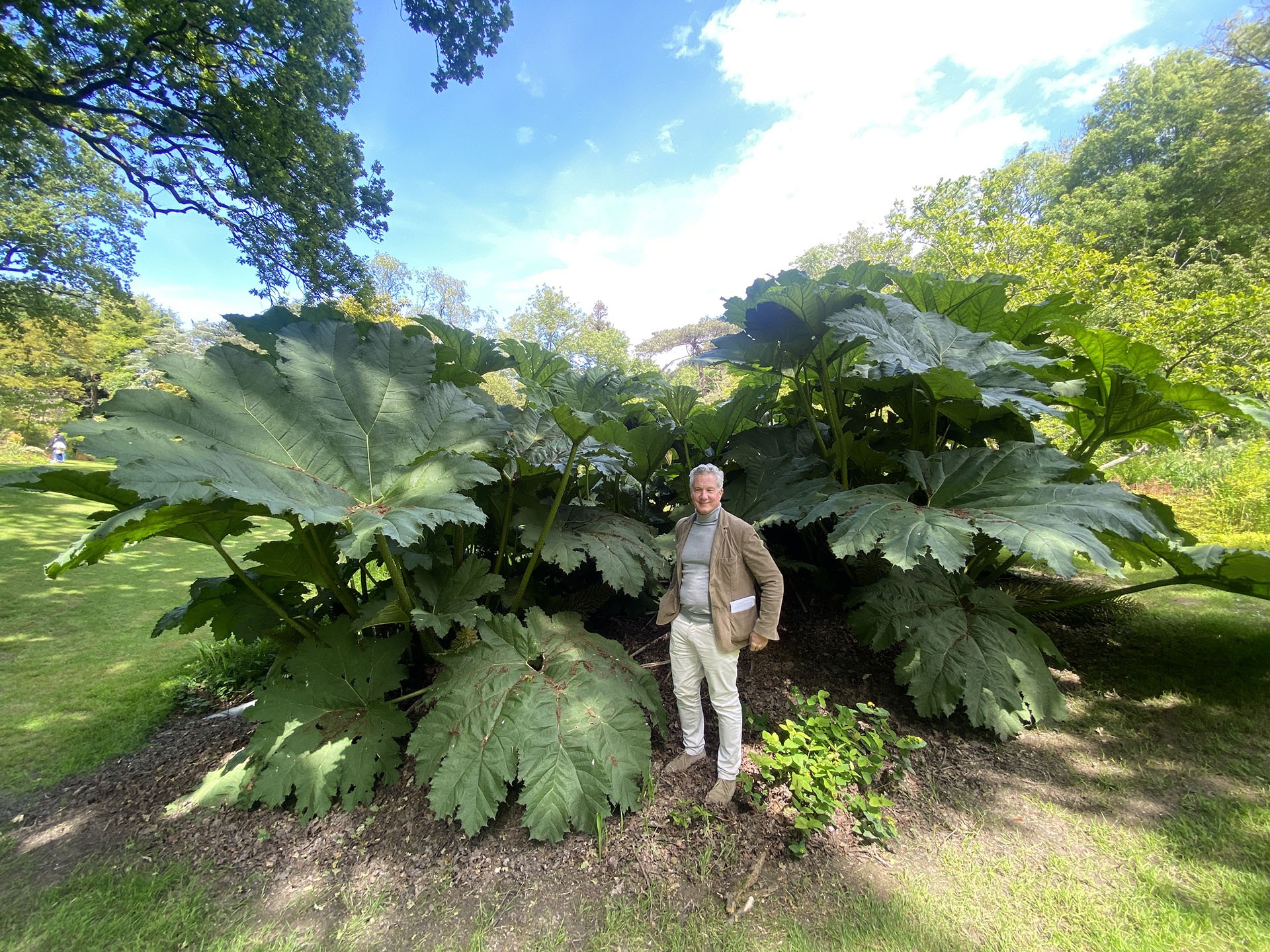
Among the highlights in the region is Le Bois de Moutiers, a British Arts and Crafts property with a residence by Edwin Luytens and gardens originally designed by Gertrude Jekyll. The property, owned by film producer Jérôme Seydoux and his wife Sophie, has just reopened after a meticulous four-year-long rehabilitation. The Jekyll garden has been reinterpreted by designer Madison Cox. The 30-acre Jardin Le Vasterival created for more than 50 years (1955-2009) by Princess Greta Sturdza of Norway, with views to the English Channel, contained one of the more entertaining plants the group encountered, giant rhubarb, among its 9,000 varieties of plants.

Among the tour’s showstoppers was steep 1.75-acre hillside Jardins d’ Étretat, with a summer residence dating to 1905 and built for French actress Madame Thébault, views of La Manche and the cliffs of Étretat, sites that inspired the painters Monet and Camille Corot. Beginning in 2017 landscape architect Alexandre Grivko overhauled the site and installed carefully clipped topiary in extended undulating rows, waves, and massive coils, along with garden rooms and a network of pathways. The Alice in Wonderland experience is augmented contemporary art installations including large polyester resin heads with various expressions by Spanish artist Samuel Salcedo that recall the “character heads” of the eighteenth-century German-Austrian artist Franz Xaver Messerschmidt.
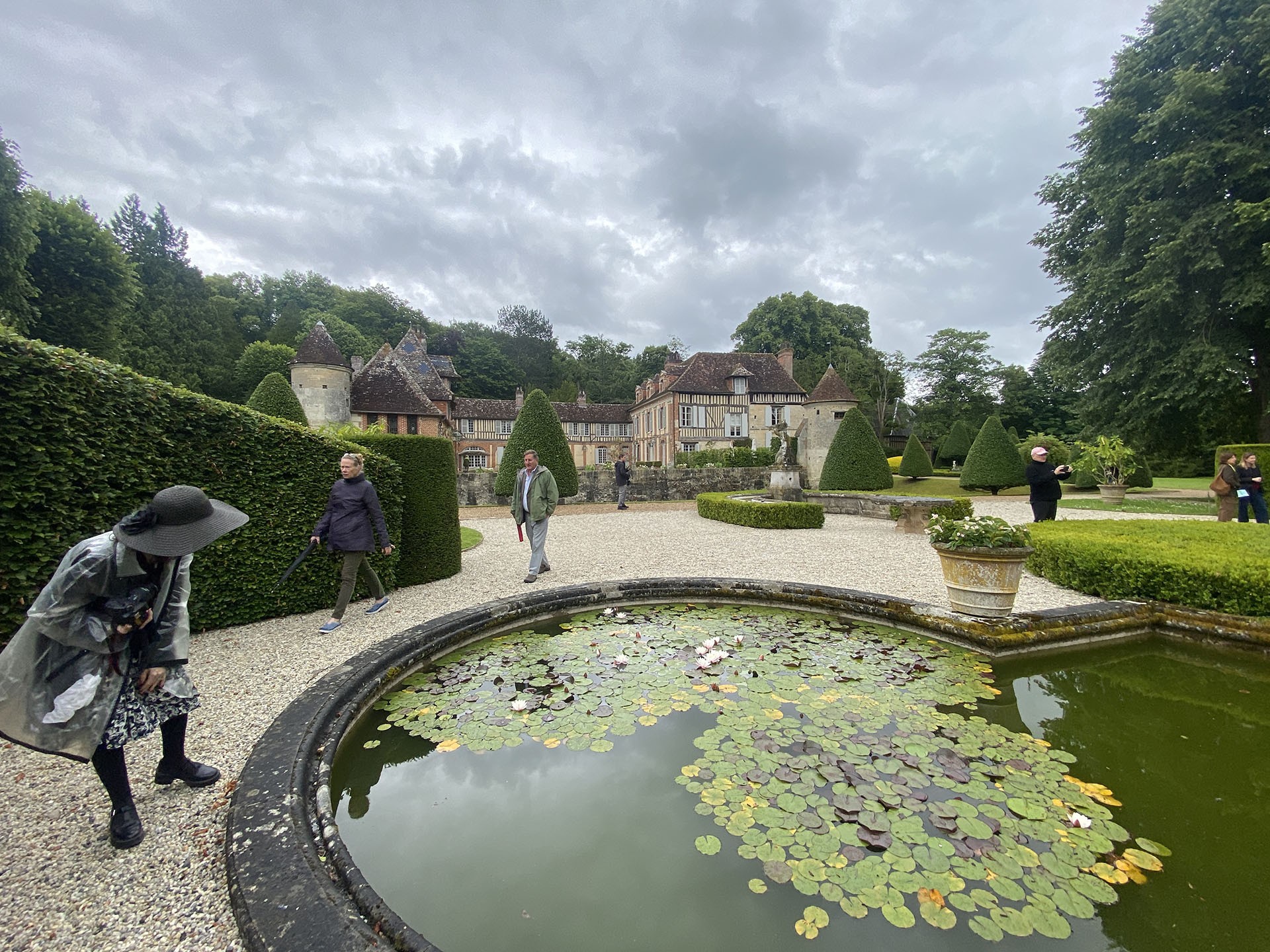
With Honfleur as home-base for a couple of days the group went to Chateau Boutemont, which began its history in the year 1000, for a tour with owner Johanna Monnier. In the early twentieth century the renowned French garden designer Achille Duchêne, who also worked at Vaux-le-Vicomte, Courances, and Blenheim Palace, participated in the rehabilitation efforts undertaken by the Drouilly family, which purchased the estate in 1915. Ms. Monnier provided inspiring insights about her family’s commitment to the historically significant and extremely elegant home and landscape before the group had a refreshing lunch in the greenhouse. That evening the group had a five-course dinner including tuna, cod, and sea bass at Vieux Honfleur, the city’s oldest restaurant which faces the boats and slender centuries-old buildings in Quai Saint-Catherine.
No trip to Normandy would be complete without seeing the Bayeux Tapestry, a 230-foot-long embroidered cloth that tells the tale of William the Conqueror, the Norman Conquest, and the Battle of Hastings in 1066. Believed to have been made in England within a few years of the battle, it is an engrossing epic that depicts in 58 scenes battles and bloodshed, collisions of soldiers and horses, ships crossing the English Channel and even Haley’s Comet. That it has survived nearly 1000 years is nothing short of astonishing.
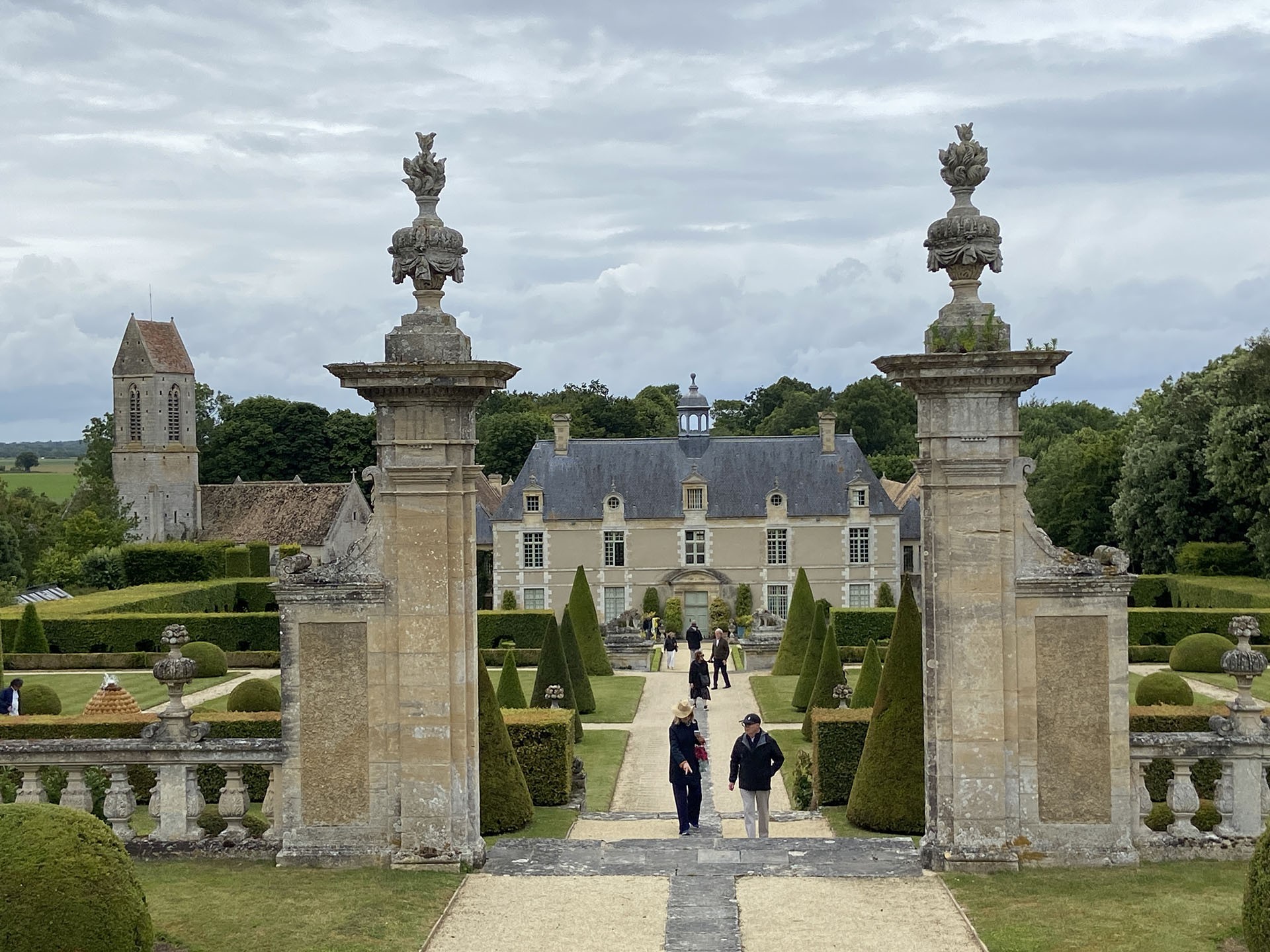
From there the tour continued on to Le Château de Brécy, a grand seventeenth-century estate with exquisite and richly ornamented Italian-style gardens laid out over four terraces. The work has been overseen for more than 30 years by the present owner, Didier Wirth, and his late wife Barbara. Following extensive strolling throughout the site, the group was invited to hear from Mr. Wirth, Chairman of the Fondation des Parcs et Jardins de France, in his enviable and authoritative library of garden and landscape architecture books.
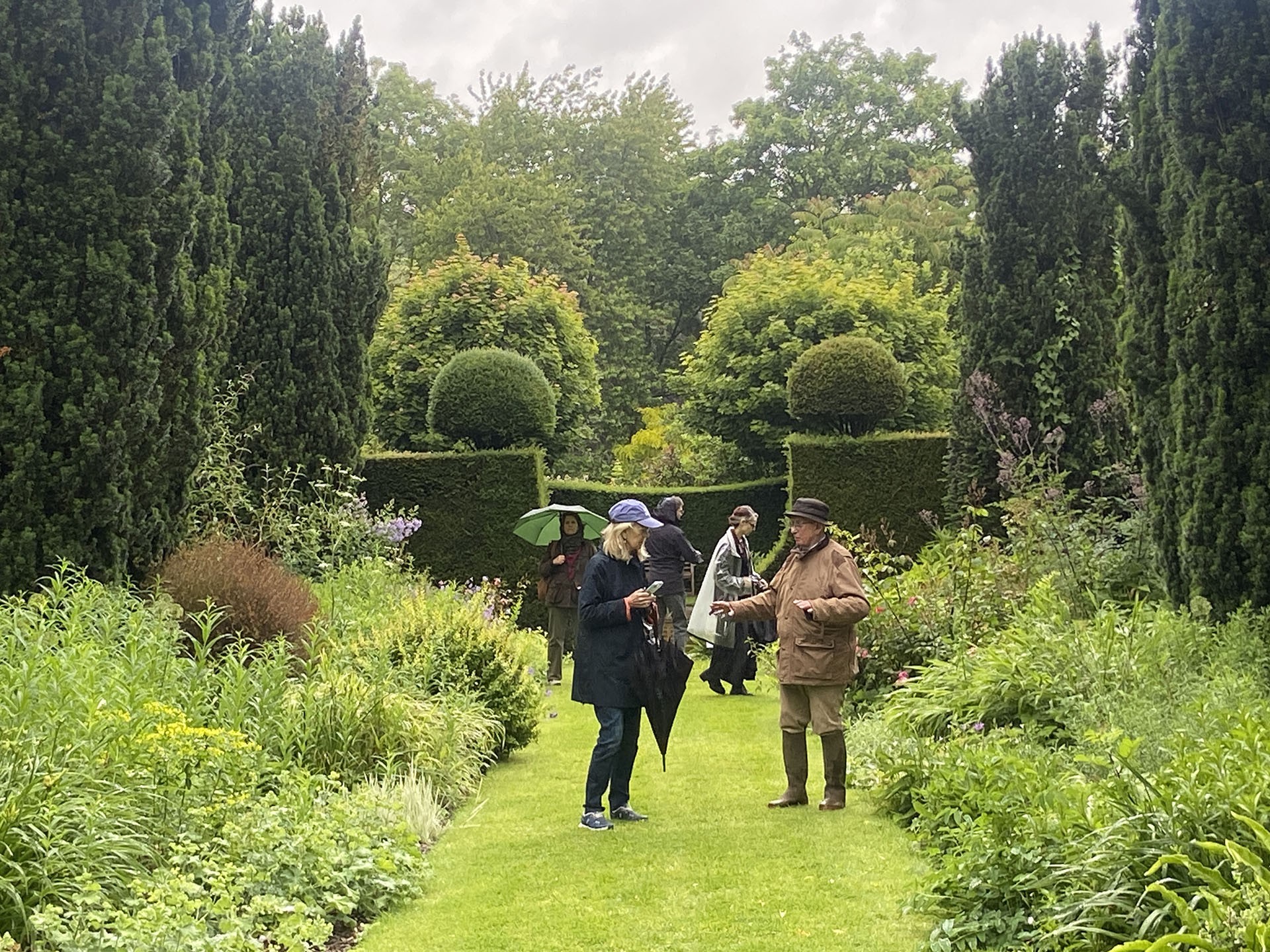
The next day featured another group favorite, Les Jardins de Castillon, a spectacular series of fifteen gardens created by Colette and Hubert Sainte-Beuve, who are both in their 90s. The endearing Mr. Sainte-Beuve, who said he began as a farmer with cows and pigs, led the group through one intoxicating verdant tableau after another featuring yew topiary, beechwood hedges, massive tree peonies, water features, and numerous other delights. In a mere 2.5 acres, the Sainte-Beuves have created an enchanting world that leaves one giddy.
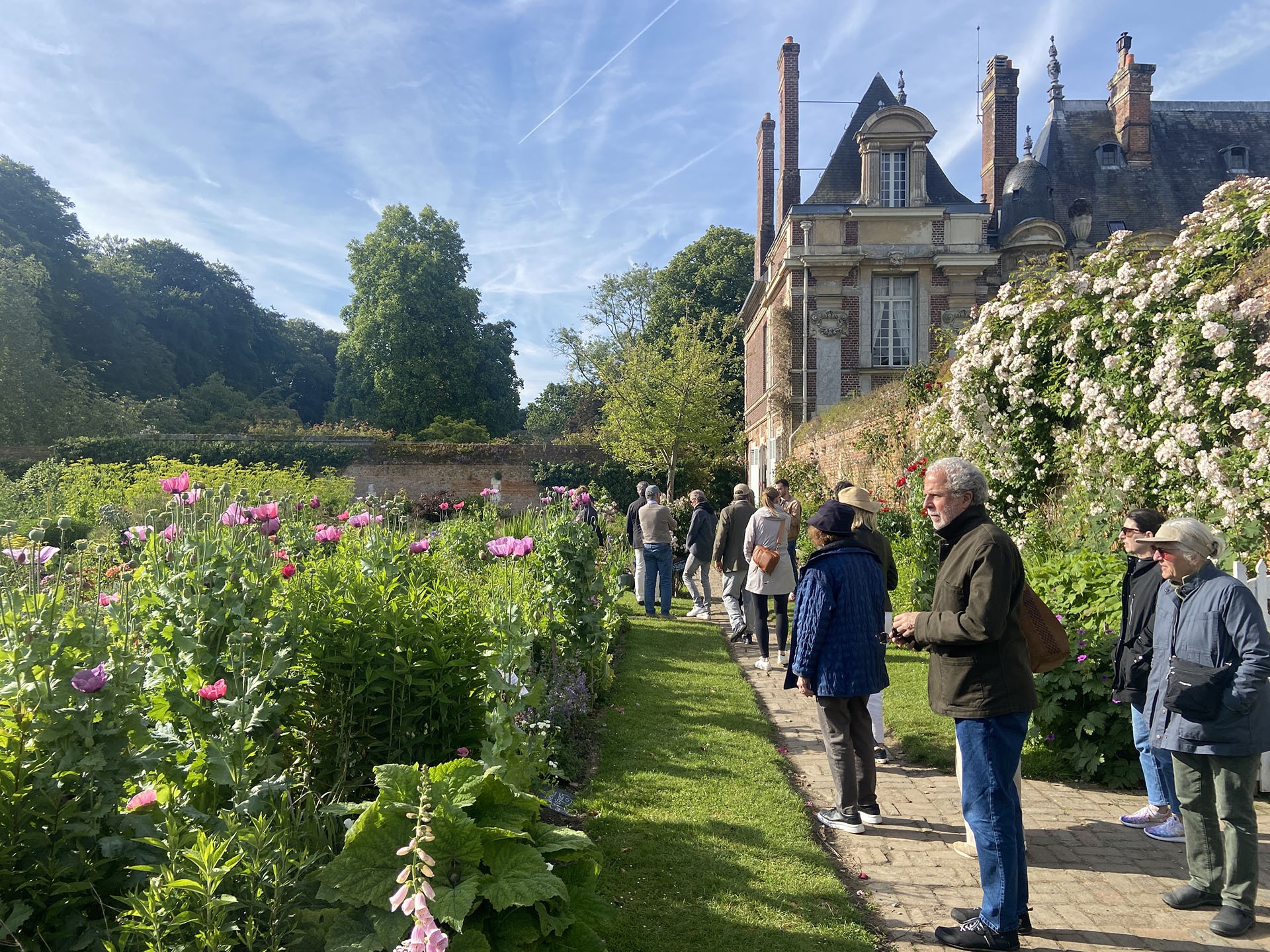
The day concluded on a somber, reflective, and reverential note with visits to Omaha Beach and the American Cemetery. The 80th anniversary of the Normandy Invasion had just passed, yet American, Canadian, and French flags, large and small, could be still seen on homes and buildings as the tour bus navigated the local roads. It was a reminder of a time marked by shared purpose and unity.
The final destinations before the tour returned to Paris were 21st-century gardens: Jardin Intérieur à Ciel Ouvert, created by Dominique and Benoit Dolomez beginning in 2000, and Les Jardins du Montperthuis, designed by landscape architect Philippe Dubreil in 2010. The Dolomezs, both sculptors whose works appear in several of the twenty different garden “galleries,” have incorporated more than 1,200 varieties of plants including more than 135 ferns throughout what was once an old dump (closed in the 1970s). Pathways, openings, enclosures, water features, light, and shadow – all are woven together to create a mini-Shangri-La.

At his farm complex Dubreil has brought together a fifteenth/sixteenth-century manor house, massive barn (where the group had a terrific lunch), stables, pigsties, stone chicken coop, for which he created a cloister-like, formal garden, along with a vegetable garden, ornamental ponds and rills, all surrounded by undulating countryside. The clipped formality of topiary offers an intriguing contrast with the rough and weathered stone buildings, and Italian-style terraces add to the bucolic environment.
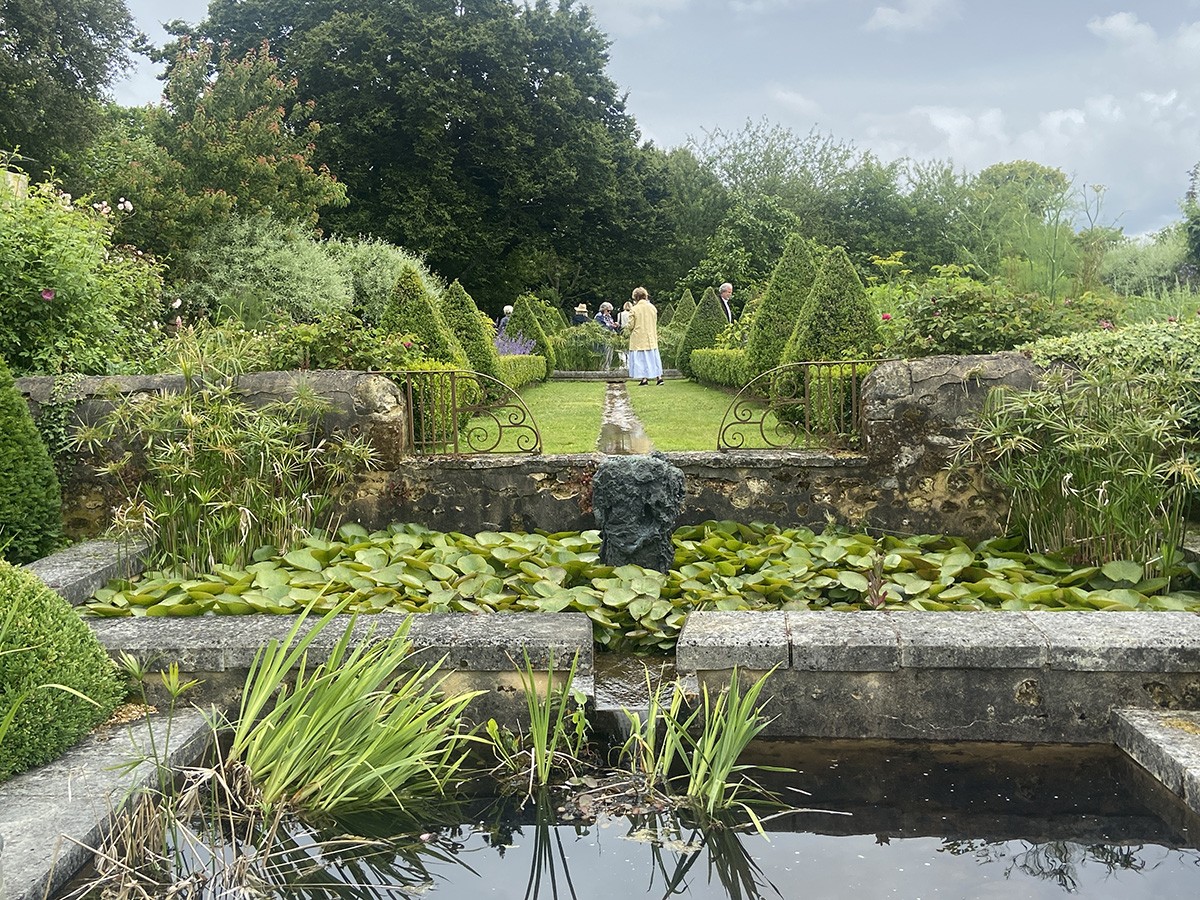
This adventure was made especially memorable because of the owner/patrons who shared their homes, gardens, and personal stories with the group. Individually and collectively, their passion, creativity, and commitment elevated and personalized the experiences of their gardens.
The itinerary for TCLF’s 2025 excursion will be announced later this year. Meanwhile, savor the images that accompany this recollection, visit the websites for these gardens, and plan your own adventure to Normandy.



